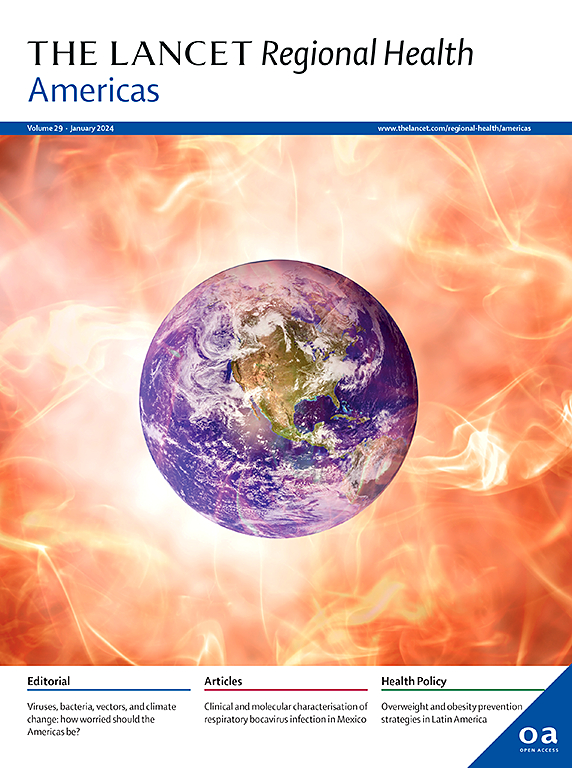Health care utilization following the adoption of U.S. paid sick leave mandates: a cohort study using health insurance claims data
IF 7
Q1 HEALTH CARE SCIENCES & SERVICES
引用次数: 0
Abstract
Background
The U.S. is one of the only developed countries in the world without a federal requirement that employers provide paid sick leave (PSL) to workers. We evaluated the association between state and local PSL mandates and health care utilization among U.S. workers.
Methods
We conducted a cohort analysis using administrative health insurance claims for 2.3 million private sector workers aged 40 to 64 from 2011 through 2019. Difference-in-differences models compared health care utilization before and after PSL mandate enactment between workers in areas with and without mandated PSL coverage. Outcomes included visits to primary care physicians (PCP), specialists, preventive care, diagnostic services, emergency department, urgent care visits, and hospitalizations.
Findings
PSL mandates were associated with an increased probability of a past year PCP visit (4.79pp; 95% CI, 1.39–8.19), specialist visit (2.71pp, 95% CI, 0.98–4.44), preventive care visit (2.75pp; 95% CI, −0.36 to 5.86), and outpatient diagnostic visits (2.20pp, 95% CI, 1.21–3.19). PSL mandates were also associated with increases in the average annual number of specialist, preventive care, outpatient diagnostic, and urgent care visits. Estimates were generally larger for those working in industries that have historically maintained low rates of PSL coverage in the U.S.
Interpretation
PSL mandates were associated with greater use of PCP, specialist, diagnostic, and preventive care services. These findings highlight the role for policies that enhance workplace flexibility, including PSL, to improve access to health care services.
Funding
The research was supported by grant R01CA237888 from the National Cancer Institute.
采用美国带薪病假规定后的医疗保健利用:使用健康保险索赔数据的队列研究
美国是世界上唯一一个没有联邦要求雇主为工人提供带薪病假(PSL)的发达国家。我们评估了州和地方PSL授权与美国工人医疗保健利用之间的关系。方法:我们对2011年至2019年期间230万40至64岁私营部门员工的行政医疗保险索赔进行了队列分析。差异中的差异模型比较了在有和没有强制性PSL覆盖地区的工人在颁布PSL任务之前和之后的医疗保健利用情况。结果包括就诊初级保健医生(PCP)、专科医生、预防保健、诊断服务、急诊科、紧急护理就诊和住院。研究发现,spsl授权与过去一年PCP就诊的可能性增加有关(4.79pp;95% CI, 1.39-8.19),专科就诊(2.71pp, 95% CI, 0.98-4.44),预防保健就诊(2.75pp;95% CI, - 0.36 ~ 5.86)和门诊诊断就诊(2.20pp, 95% CI, 1.21 ~ 3.19)。PSL任务还与专家、预防保健、门诊诊断和紧急护理就诊的平均年次数增加有关。对于那些在美国历史上一直保持低PSL覆盖率的行业工作的人来说,估计通常更大。解释:PSL的授权与PCP、专家、诊断和预防保健服务的更多使用有关。这些发现突出了提高工作场所灵活性的政策,包括公共福利政策,在改善获得卫生保健服务方面的作用。本研究由美国国家癌症研究所R01CA237888基金资助。
本文章由计算机程序翻译,如有差异,请以英文原文为准。
求助全文
约1分钟内获得全文
求助全文
来源期刊

Lancet Regional Health-Americas
Multiple-
CiteScore
8.00
自引率
0.00%
发文量
0
期刊介绍:
The Lancet Regional Health – Americas, an open-access journal, contributes to The Lancet's global initiative by focusing on health-care quality and access in the Americas. It aims to advance clinical practice and health policy in the region, promoting better health outcomes. The journal publishes high-quality original research advocating change or shedding light on clinical practice and health policy. It welcomes submissions on various regional health topics, including infectious diseases, non-communicable diseases, child and adolescent health, maternal and reproductive health, emergency care, health policy, and health equity.
 求助内容:
求助内容: 应助结果提醒方式:
应助结果提醒方式:


